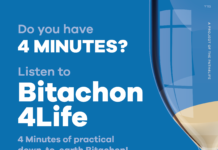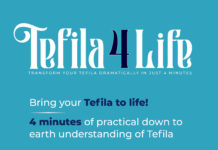 The annual melaveh malkah for the Kasho Yeshiva in Bedford Hills was held at the Vayoel Moshe Hall in Williamsburg on Motzaei Shabbos Parshas Mishpatim, February 13, 2010. A highlight of the evening was the raffling of a used black velvet yarmulke that belonged to Rabbi Raphael Blum, zt”l (1910-2005), late Kasho Rebbe.
The annual melaveh malkah for the Kasho Yeshiva in Bedford Hills was held at the Vayoel Moshe Hall in Williamsburg on Motzaei Shabbos Parshas Mishpatim, February 13, 2010. A highlight of the evening was the raffling of a used black velvet yarmulke that belonged to Rabbi Raphael Blum, zt”l (1910-2005), late Kasho Rebbe.
In some Chassidishe dynasties, old items that belonged to predecessors and ancestors are held especially precious. If it’s a piece of clothing, it will be worn on special days such as Yom Kippur, Hoshanah Rabbah, Seder night, or at family weddings. If it is an item such as a menorah, Kiddush cup, besamim box, or esrog box, the item is carefully used on limited occasions. Old tefillin worn by ancestors are worn if they remain kosher. A Sefer Torah is preserved kosher as long as possible.
Making the Kasho Rebbe’s yarmulke available was a true sacrifice on the part of his sons and grandsons. The lucky winner has acquired a true Jewish treasure.
The late Kasho Rebbe was born in Kasho, then-Czechoslovakia, to Rabbi Shmuel Blum, zt”l, Torah lecturer at Chevra Temimei Derech. He was a disciple of Rabbi Shaul Brach, Hy”d (d. 1940), Kasho Rav and later Kruleh Rebbe. Having established a yeshiva in the city of Mihalowitz, Rabbi Raphael survived the Holocaust. Liberated on January 18, 1945, he came to the city of Arad in Romania to find it untouched by the Holocaust and Jewish life there was relatively uninterrupted. In one of the many sefarim that he authored, he described his liberation as having arisen from purgatory to heaven. In the summer of 1945, he returned to the city of Kasho and threw himself into the work of reestablishing Jewish communal life there. Together with other leading rabbis, he participated in the freeing of marriage restrictions for more than 200 widows (agunos) and 600 widowers. The Jewish population of Kasho grew to 5,000 souls, all of whom realized that emigration was a must.
In 1948, the Kasho Rebbe arrived in Brooklyn and began the work of transferring his yeshiva from Kasho. He was appointed as the Rosh Yeshiva of the Tzelemer Yeshiva Arugas HaBosem and established the Kasho Kehillah in Williamsburg. In 1962, an unsuccessful attempt was made to establish the Kasho Kehillah in Morris County, N.J. Shortly thereafter, property was purchased in Irvington, N.Y. (Westchester County), where the yeshiva flourished. A fire destroyed the entire yeshiva complex but miraculously left the Rebbe’s study and extensive sefarim collection untouched. In 1977, the yeshiva acquired the Hillcrest Center for Children in Bedford Hills and established itself there as Kahal Adas Kasho. Away from the hustle and bustle of New York City, the yeshiva blossomed and the Kasho Rebbe earned respect for his immense learning and his vigorous Torah leadership.
The late Kasho Rebbe would routinely scan the benches in his beis medrash for sefarim or siddurim left about. Even in his later years, he would personally go and collect them. Upon his entry into the beis medrash, his students learned to jump up and quickly search the beis medrash for sefarim or siddurim not in their proper places, knowing that the Kasho Rebbe himself would do so.
{Machberes-Rabbi G Tannenbaum/Noam Amdurski-Matzav.com Newscenter}












Nu, so how much did it go for?
You’re comparing a sefer torah and teffilin to a yarmulaka of a rebbe? A kosher sefer torah must be preserved no matter what, and teffilin the same. A yarmulka, while in present day terms defines a frum Jew, is brought down NO WHERE in halacha. The concept of gilui rosh is mostly at davening. If you want to say thay the Rebbes yarmulka has sentimental value, ok, but please don’t compare it to a sefer torah and tefillin.
how about loaning this HOLY YALMULLKA for special occasions.
im also very curious what the price was as wouldve wanted the chance to bid on it too